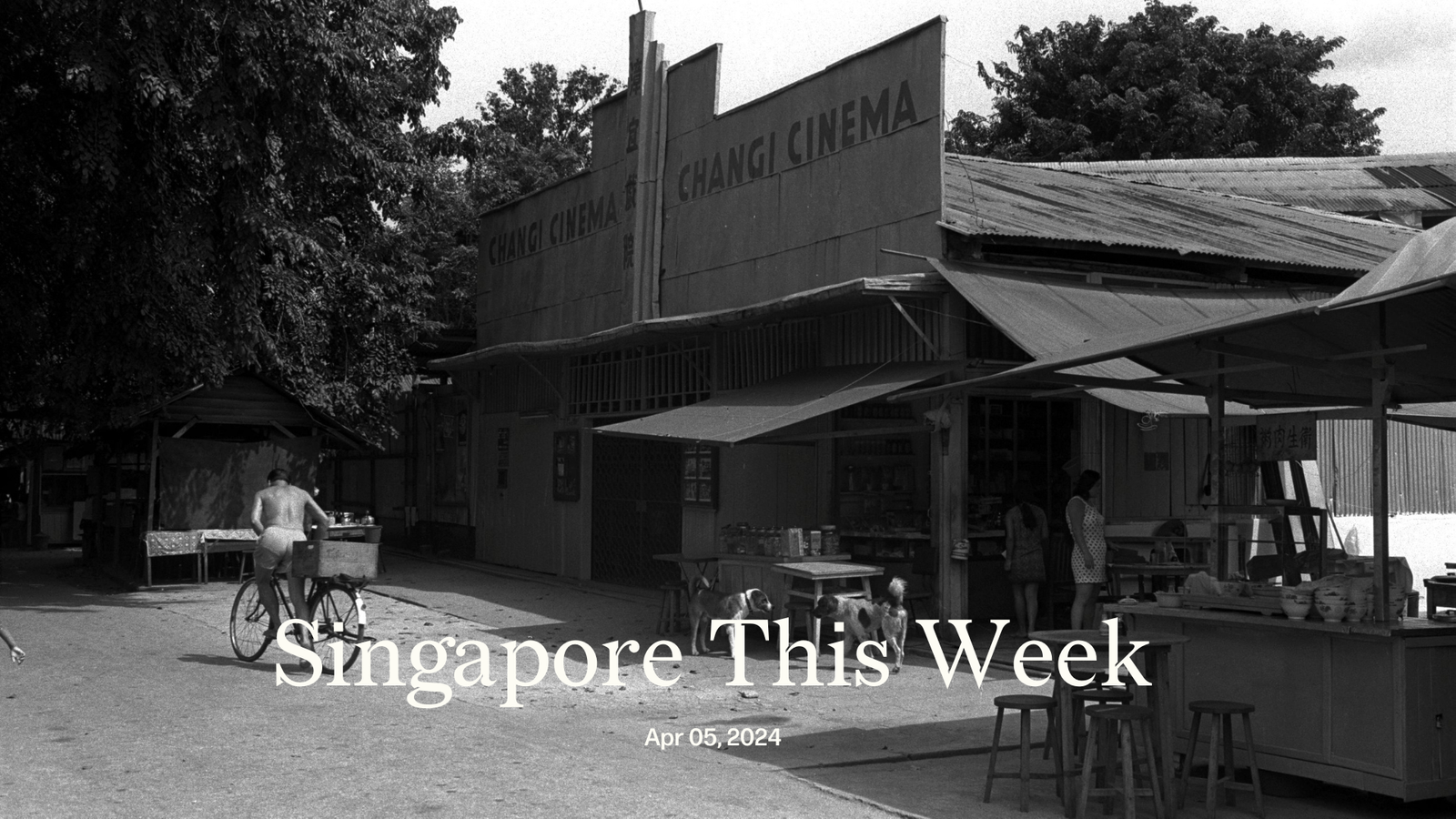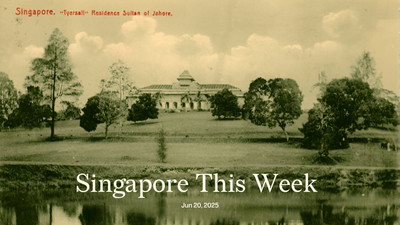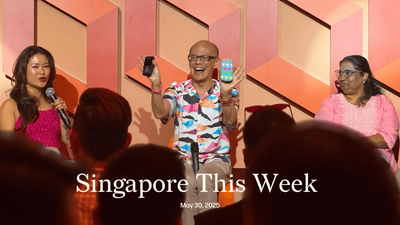Politics: Pulling wool over our eyes?
Last month, Singapore’s Ministry of Education (MOE) came under fire from parents who were unhappy with a Character and Citizenship Education (CCE) lesson with the grandiose title, “A better solution to resolving conflicts/disagreement: The situation in Israel and Gaza”. Jom also criticised the skewed narrative presented on its slides, which one can easily find through an online search. But MOE had previously decided that it wouldn’t officially release the materials, and thus Parliament won’t have a chance to debate them. This is somewhat ludicrous, though in keeping with the government’s overall caginess with Israel’s war on Gaza. (Peace rallies and other public events have been banned, even at the supposed Speakers’ Corner in Hong Lim Park.)
“How is it justifiable not to release the CCE lesson slides to the public when the materials had already been imparted to our children?” asked Leong Mun Wai, a non-constituency member of Parliament (NCMP) with the Progress Singapore Party (PSP). Chan Chun Sing, education minister, worried about the slides being examined without the full context. “We welcome parents with concerns to come and see the teachers who will explain to them how the lesson is conducted. This is much better than just looking at a set of slides without explanation.” Hazel Poa, the other PSP NCMP, asked how many schools have organised such dialogue sessions. “Some schools have received such requests,” Chan replied. (The education minister, who once said that cotton comes from sheep, isn’t really known for his clarity.)
Jom has a humble suggestion for MOE. There is something called “video”, and another thing called “online learning”. Film the CCE session—perhaps Chan himself can teach one—and put it online. This will clear the air for all concerned adults, not just parents in “some schools”. It’s odd that a so-called “Smart Nation” hasn’t cottoned on to these technologies. But as Chan himself would know, we learn something new every day.
Note: In our essay of the week, “Genocide in Gaza? Our moral responsibility”, Jom interrogates, among other things, the opaque nature of Israel-Singapore relations, and the government’s approach to public discourse with the war.
Society: The job numbers’ game
In a continuation of a long-standing pattern, the ruling People’s Action Party (PAP) this week again did not provide all the granular employment data to the opposition’s satisfaction in Parliament. Tan See Leng, manpower minister, did offer some broad numbers. Employment in Singapore grew by 88,400, of which 83,500 of those jobs went to non-residents—the bulk of which (64,800) was from the rise in work permits and other work pass holders for jobs, such as construction, that Singaporeans don’t “typically…want to do”, Dr Tan said. Another 18,700 jobs (22.4 percent) went to higher-skilled migrants. Citizens and permanent residents accounted for the remaining 4,900 employment growth. Gerald Giam, a Workers’ Party (WP) member of Parliament (MP), asked what percentage went to citizen “PMETs” (professionals, managers, executives and technicians) and in particular older citizen PMETs. But the minister’s loquacious answer merely drew this response: “I don’t think it actually addresses the question I was asking.” In 2020, Pritam Singh, the WP chief, had said: “It is pointless for us to keep asking for that data if the government is not going to provide it.” He was then, similarly, wanting a breakdown of PMET job growth between citizens and residents. Chan Chun Sing, then minister of trade and industry, memorably retorted: “What is the point behind the question?” In 2023, the PAP was again on the backfoot, with respect to data about intra-corporate transferees that the WP had wanted in 2016 (shared much later); and with data about the jobs breakdown between old and new (naturalised) citizens.
The PAP is right in that employment isn’t necessarily a zero-sum game, and that nativists could latch onto specific data points to stoke xenophobic sentiments in society—particularly awful for Indian migrants. But it’s also politically convenient. More Singaporeans might turn against the ruling party if data shows that citizens haven’t benefited as much from jobs growth. The unemployment rate may be low, but the quality and pay of jobs matter too. In any case, those aren’t good enough reasons to hide data. The PAP would do well to trust the opposition and Singaporeans to engage in a healthy, not corrosive, debate over jobs. The opacity, in fact, is what often fuels falsehoods and bigotry globally. “Perhaps he may not understand my overarching English,” Dr Tan had said during last year’s jobs debate, in response to PSP’s Leong. One year on, many of us still don’t.
Society: More powers for police to apprehend, search and seize
Parliament passed an amendment to the Mental Health (Care and Treatment) Act (MHCTA), giving the police more powers to apprehend people with mental disorders, who are considered a safety risk to themselves or others. The danger “need not be imminent, and actual harm is not required.” The Police Force Act will also be amended to clarify that search and seizure powers will be available to police when making apprehensions before handing the subject over to medical staff. Once apprehended, the police must bring the individual to a designated psychiatric institution for assessment and treatment. Safeguards like body-worn cameras for ground response officers will also ensure accountability and transparency, assured Josephine Teo, second minister for home affairs.
During the nearly three-hour-long parliamentary debate, several MPs raised concerns about how the changes to the laws may negatively impact people with mental illness. He Ting Ru, a WP MP, wondered whether the amendments would “unnecessarily perpetuate stigma against persons living with mental health conditions.” He and others stressed the importance of training law enforcement officers to sensitively handle such cases. Some suggested that mental health professionals or community first responders should accompany police officers when responding to such cases. “Unfortunately, I think this will be very difficult to accomplish,” Teo said, since it will require enough professionals on standby 24/7 for them to respond immediately to “all cases at all parts of our island.”
In a commentary for Jom last week, Chan Li Shan, a mental health researcher, warned that the amendments might be “counter-productive to society”, if for instance, excessive force during apprehension worsens that trauma of persons with mental illness. Chan may not have succeeded in getting the government to backtrack—can anybody?—but her piece was referenced by He and nominated MP Keith Chua in Parliament, while her recounting of arrest during a mental health episode encouraged two other Jom readers to share their experiences on our Letters page. With more such words of resonance and comfort between Singaporeans—any of us can be afflicted by mental health concerns—we may one day not worry about “safety risks” anymore.
Society: #SharifStays
“I am a victim of harassment…I am deeply saddened by the injustice that has happened to me…We [migrant workers] are human and deserve respect and rights too,” said the voice on the video, on the Instagram page of Workers Make Possible, a labour rights group in Singapore. The man speaking is MD Sharif Uddin, a Bangladeshi who has worked here for 16 years. Sharif is no stranger to many in the migrant worker community. He may have arrived on these shores as his family’s main breadwinner, part of the massive workforce of low-wage migrants who have been vital in the literal building of Singapore. But in the ensuing years, Sharif has made a name for himself as a talented poet and a fearless advocate for workers’ rights. At the 2018 Singapore Book Awards, he became the first migrant worker to win the prize for Best Non-Fiction Work, for Stranger to Myself: Diary of a Bangladeshi in Singapore. And has since published a second collection of writings, Stranger to My World: The Covid Diary of a Bangladeshi Migrant Worker. In 2022, Sharif co-organised “A Journey By Lorry”, an arts exhibition to create awareness about the dangerous practice of transporting migrant workers in the backs of lorries—the exhibited artwork was eventually published as a book.
But the life that he has so painstakingly built on this island looks likely to come to an abrupt and shocking end. On March 11th, Sharif was fired from his job as a safety coordinator, the culmination of nearly two months of his employer being harassed by supposed debt collectors both at the office and at home. Sharif maintains that he has never borrowed money from loan sharks, and doesn’t have a clue as to who sent the mail and made the threatening phone call to his employer’s workplace. In order to remain in Singapore, the husband and father of two has until April 12th (Sharif’s official last day) to find another job and have his work permit transferred to the new employer. An almost successful attempt to secure another job was thwarted. A potential new employer started receiving similar messages, and has decided against hiring him. As April 12th draws ever closer, his fate (and indirectly his family’s) may lie in the hands of the state. He says that he’s waiting for responses from the police and MOM. “I suffer from an inferiority complex,” he told Jom. “The culprit has not been identified and I have to leave even if I didn’t commit a crime. I am having a hard time accepting this.” We hope that there’s enough time for the cops and MOM to get to the bottom of this, and find a way for one of the most important contributors to the Singapore Story to stay.
You can show your support for Sharif by signing an online petition, and/or attending “Stand with Sharif”, an event organised by Workers Make Possible and Students for Migrant Workers on Saturday, April 6th at 8pm.
Update: Sharif told Jom that he has met with the police, the Agency for Care Effectiveness, and Migrant Workers’ Centre, who have said that he “can stay in Singapore until the investigation is over.” According to Sharif, they have also assured him that they would “look into this matter seriously.”
History weekly by Faris Joraimi
“Heritage should not be confused with history,” wrote the American historian David Lowenthal in a famous 1998 essay berating the former—it “exaggerates and omits, candidly invents and frankly forgets, and thrives on ignorance and error.” History, he bellowed, was evidence-based and dispassionate. “Heritage”? The product of present-day social and cultural attitudes, shaping a desire to own and inherit the past. Two decades on, this view has come under heavy scrutiny, as professional historians’ methods are arguably no less immune to present-day biases. In the Singapore context, however, the heritage sector and academic history have often dovetailed harmoniously: with museums helping to shape a national narrative institutionalised as gospel truth against so-called “revisionists”. In recent years, the National Heritage Board has told relatively more nuanced stories, capturing the minutiae of Singapore’s past previously given short shrift in the grand arc of Third-World-to-First. The newly launched Changi Heritage Trail assembles 23 locations into three thematic routes—Bungalows and Beaches; War and Peace; Gateways and Communities—which blend architecture, environmental history, geopolitics and social history into a densely layered experience of Singapore’s eastern tip. The trail reaches back to 17th-century Dutch-Portuguese naval battles off Changi, long before Raffles, when the kingdom of Johor was a powerful factor in the policy of both European players. Its 77-page companion guide is conscientiously cited, with a bibliography spanning academic studies, government records and oral interviews with residents. “Ignorance and error” it is not; as an “Eastie”, I’m tempted to give the walks a go myself.
There might be one in your neighbourhood; this Changi trail joins 22 existing heritage trails. Besides places, Singapore’s heritage now also includes practitioners of living traditions. Three “Stewards of Intangible Heritage” were officially recognised this week for “upholding Singapore’s intangible cultural heritage and promoting these elements to the wider community and younger generation.” This year’s awardees are Cai Bixia (Chinese opera), Osman Abdul Hamid (Malay dance) and Raymond Wong (Peranakan beadwork and embroidery). Launched in 2019, this scheme came well after similar awards were introduced in neighbouring countries: the Philippines has been recognising its “National Living Treasures” since 1993. Still, it’s never too late to start making our own archive of “tradition”. But as the Long Island reclamation project gears up to transform Changi even further, what is “heritage” to Singapore? Maybe it does “candidly invent and frankly forget”.
Arts: Are Singaporean writers chopped liver?
Existing large language models (LLM) like OpenAI can’t understand words like “koyak” or “wah lau”, so the government is investing in alternatives. These LLMs, which are artificial intelligence (AI) systems that process extensive text databases in order to generate language, power tools like ChatGPT. Since their databases consist largely of Western sources, Infocomm Media Development Authority (IMDA) is collaborating with AI Singapore and the Agency for Science, Technology and Research (A*Star) to develop AI products that can understand, generate and analyse South-east Asian languages within our multicultural, multilingual context. The National Multimodel LLM Programme will do so by building on South-east Asian Languages in One Network (SEA-LION), an existing LLM that operates with up to 7bn “parameters”, a standard measure of processing power. The programme hopes to extend it to 30-50bn parameters (for reference, OpenAI’s GPT-4 has 1,700 billion, or 1.7trn, parameters). But who will be teaching SEA-LION the intricacies and nuances of Singlish and the Singaporean context? Last week, IMDA sent a “Preliminary Survey on Gen AI Research” to some Singaporean publishers and authors with the intention of finding out “sentiments [on] the ground” about developing an LLM trained by “contributions by local authors and publishers”.
Worryingly, the survey failed to mention remuneration of any kind. “It seems wrong to me to ask writers and publishers to contribute their work to the LLM data set and not to pay them. The state should look into strengthening copyright laws, and not exploiting loopholes created by technological changes,” Koh Jee Leong, publisher and editor-in-chief of Gaudy Boy, a literary small press, told Jom. Over the next five years, Singapore will be investing over S$1bn in AI industry development under the National AI Strategy 2.0; the National Multimodel LLM Programme itself has a budget of S$70m. Will our poets, writers and publishers see a single cent of that budget? Koh worries both about Singapore’s broader “headlong rush into AI”, and what impact it might have on overall employment, as well as the narrower issue of whether “it’s good for Singapore’s literature for publishers and writers to participate in this.” The copyright manifesto of PEN International, a UK-founded worldwide association of writers that promotes literature and defends freedom of expression, reads: “To deny authors the ability to earn monetary reward from their creative works is to deny the works value and their authors a livelihood.” For passion to be made possible, creators need to be fairly compensated for their work.
Arts: Figuring a scene, layer by layer
“The fisher folk live in simple joy and harmony/No cars, no dust, no noise/One might ask if civilisation brings any good/The question persists, and this picture was made”. Chen Chong Swee’s poem embodies the same peace and relative simplicity of a Singapore captured later in Cheong Soo Pieng’s 1978 painting, “Drying Salted Fish”; a line of silver fish hang from wooden poles, women clad in kebayas crowd around a barrel of fish and a goat grazes lazily next to them. Cheong’s painting will undoubtedly be familiar to us, as it sits next to Chen Wen Hsi’s “Gibbons Fetching the Moon from the Water” on the 50-dollar note. Almost 50 years later, National Gallery Singapore (NGS) is delving deeper into the familiar painting—literally. The exhibition “Cheong Soo Pieng: Layer by Layer” is the culmination of a collaboration between the NGS team, radiographers from Singapore General Hospital as well as Diana Tay, conservator and founder of BARC Labs. X-ray scans and infrared photography in combination with Tay’s knowledge of material analysis reveal insights into Cheong’s techniques across different mediums, providing another dimension of the classic Nanyang Style we’ve not seen before. The exhibition showcases about 30 of Cheong’s paintings made in the 1950-80s, and explores the foundational question: “what makes a painting?”
At the same time, NGS asked “how do you understand and make sense of artworks?” via another exhibition, “Figuring a Scene”. Curated by Patrick Flores, deputy director of curatorial and research at NGS, “Figuring a Scene” departs from the linear, chronological form of storytelling typically found at the UOB Southeast Asia Gallery. Its works are organised into six thematic “episodes”—shadow, fruit, fire, air, wax and city. Featuring pieces from both regional and local artists such as Malaysia’s Sharon Chin, the Philippines’ Renato Habulan and Singapore’s Robert Zhao Renhui, this exhibition explores how natural elements can elicit different interpretations depending on the viewer’s subjective lived experiences. Both exhibitions open today. By embracing new curatorial approaches, they encourage viewers to form refreshed relationships with and perspectives of existing, even familiar art.
Tech: Carousell gets more lux
The largest karung guni in Singapore today is Carousell. Yet, the group continues to strive to grow its user base tenfold. Expanding into the luxury vertical will be critical to achieving this. It most recently acquired LuxLexicon, which positions it well to exploit the fast-growing luxury resale market in South-east Asia, Hong Kong, and Taiwan. This market is anticipated to balloon to a value of US$7.5bn (S$10.1bn) by 2026, reflecting a burgeoning consumer interest in sustainable and high-value purchases. Carousell’s foray into luxury, marked by a 71 percent monthly increase in high-end bag listings over two years, showcases its potential to tap into and stimulate this lucrative sector. The introduction of the Carousell Certified Luxury programme and the Sell to Carousell Luxury service underscores the company’s commitment to enhancing consumer trust and convenience in the luxury resale space. These initiatives have already demonstrated their effectiveness, evidenced by a fourfold increase in transactions for the certified luxury programme.
Notably, the leadership changes, with Gijs Verheijke transitioning to oversee Carousell’s experience and marketplace teams, and co-founder Marcus Tan leading the luxury arm, indicate an organisational restructuring to align with its strategic priorities. Furthermore, LuxLexicon’s integration, while retaining its independent operations and brand under founder Florence Low, suggests Carousell’s approach to leverage niche expertise while expanding its overarching luxury offerings. Carousell’s broader acquisition strategy, including of companies like Laku6 and Refash, and the establishment of Carousell Campus, its regional headquarters, reinforces its ambition to be a dominant player in the so-called “recommerce” (reverse commerce) market. This focus on luxury goods, backed by strategic initiatives and leadership alignment, could be the next big thing as the popular digital karung guni aims for exponential user growth.
Tech: Ninjavan explores cold chain amidst increased heat from competitors
As the e-commerce market cools, regional logistics players such as Ninja Van face significant challenges, as highlighted by a seven percent year-on-year revenue decrease and a 32 percent widening in operating losses in FY 2023 (ending June 2023). Despite these difficulties, Lai Chang Wen, Ninjavan’s CEO, remains optimistic, forecasting an earnings before interest, depreciation and amoritsation (EBITDA) breakeven within the next 12 months, and a net profit breakeven six months thereafter. This optimism is partially buoyed by the growth of Ninja Mart, a B2B service catering to the fast-moving consumer goods sector in non-urban areas, which showcases better unit economics compared to traditional e-commerce logistics.
The company’s financial strain is attributed to an ongoing price war, which saw a nearly 20 percent drop in the price of last-mile delivery services, forcing Ninja Van to either lower prices or lose volume. This competitive pressure, particularly from Indonesia-based J&T Express, is evident in revenue declines of 33 percent in Indonesia and 45 percent in the Philippines. Beyond that, e-commerce platforms also have more significant price negotiation power with their larger volumes and have even started to bring some of their logistics operations in-house.
In response, Ninja Van is diversifying its business lines, notably through Ninja Mart and a new venture into cold chain logistics. These sectors, promising three times the margins according to Lai, are considered pivotal for driving Ninja Van towards profitability. However, despite efforts to cut costs, the company couldn’t align productivity with reduced delivery prices, leading to a slight increase in total operating expenses. This financial scenario necessitates further fundraising, with Ninja Van open to equity investments that align with its strategic direction towards B2B and cold chain logistics. As a key part of the e-commerce value chain in the region, Ninja Van’s situation reflects the broader trends of cost-cutting in online markets, where investors are demanding higher profit margins.
If you enjoy Jom’s work, do get a paid subscription today to support independent journalism in Singapore.








